This site uses cookies as defined in our Cookie Policy, by continuing to use this site you agree to their use.
Continue
| Arrive | Depart | ||||||
| 12th12 | FebFeb | 202525 | Hanoi, Vietnam, embark on the Emerald Harmony | ||||
Fly from the UK to Hanoi. Xin Chao and welcome to Hanoi! On arrival, you will be met by your Emerald Cruises representative and transferred to your hotel, situated in downtown Hanoi, for a one-night stay. Relax at the hotel, explore the city, or wander Hanoi’s romantic West Lake. This evening, meet your tour director for your welcome briefing. | |||||||
| 13th13 | FebFeb | 202525 | Hanoi, Vietnam | ||||
This morning after breakfast, leave Hanoi and travel to Halong Bay where you will board your traditional-style junk boat. Cruise through the bays and islets enjoying the stunning scenery of this magnificent region. Enjoy the tours offered on board, learn more about the main livelihood of the locals in the area or simply choose to relax. Towards the end of the day, the boat anchors for the night in the Trinh Nu area among the karst formations where dinner will be served on board. Included Excursion | |||||||
| 13th13 | FebFeb | 202525 | Ha Long Bay, Vietnam | ||||
A visit to the north is not complete without a trip to Halong Bay, where placid waters give way to more than 3,000 limestone karsts and wind-sculpted limestone formations that jut from foggy lagoons. Dotting the bay are tiny islands bordered by white sandy coves and hidden caves, adding to the majestic landscape of this UNESCO World Heritage Site. Adding to this naturalist’s dream is the biodiversity of islets, grottos, and Cat Ba Island National Park. The bay, however, shows tourism’s impact: the clearing of mangrove forests to make way for jetties and piers, marine life threatened by game fishing, and garbage from passenger boats and fishing villages washed up on the shores.Beyond its geological uniqueness are activities like hiking, kayaking, rock climbing, or exploring one of the many floating villages where fishermen bring in their daily catch. The downside to all this allure is the large number of unlicensed boats it draws to the bay each day.Boat trips out onto the bay are the main tourism stock in trade farther north, but a more multifaceted side of the area can be experienced at Cat Ba Island. The largest island in Halong Bay, Cat Ba is very much its own entity. Its national park offers incredible biodiversity, with more than a thousand species of plants having been recorded here. Animal life is slightly thinner on the ground, but alert visitors may spy inhabitants such as the endangered golden-headed langur, wild boar, deer, civets, and several species of squirrel. Trekking through the wilderness is a highlight with a number of fascinating trails to follow.Cat Ba Island has also become a firm favorite with the adventure sports set. Indeed, along with Railay Beach in Thailand, it is recognized as one of the top spots in the region for rock climbing. Other outdoor pursuits include sailing and kayaking around the karsts. Although Halong Bay has arguably been tainted by over-exposure, Bai Tu Long Bay farther east toward China, retains all the majesty of Vietnam’s premier bucket-list natural attraction but sees a fraction of the traffic of its immediate neighbor to the west. Here, visitors will find islands of substantial size with deserted beaches and untamed jungle. Halong Bay's 3,000 islands of dolomite and limestone cover a 1,500-square-km (580-square-mile) area, extending across the Gulf of Tonkin nearly to the Chinese border. According to legend, this breathtaking land- and seascape was formed by a giant dragon that came barreling out of the mountains toward the ocean—hence the name (Halong translates into "descent of the dragon"). Geologists are more likely to attribute the formations to sedimentary limestone that formed here between 300 and 500 million years ago, in the Paleozoic Era. Over millions of years water receded and exposed the limestone to wind, rain, and tidal erosion.Today the limestone formations are exposed to hordes of tourists—but don't let that discourage you. Hundreds of fishing trawlers and tour boats share space on these crystal waters, yet there seems to be room for everyone. Most people use the main population center, Halong City, as a base from which to venture into the bay. Although it's now officially one municipality, Halong City was, until 1996, two separate towns: Bai Chay is now Halong City West, where Halong Road winds its way around the coast and past the lifeless central beach; Hon Gai is the grimier Halong City East, where a coal transportation depot dominates the center of town and covers nearby roads and buildings with a sooty film. Locals still refer to the towns by their old names, but they are now inexorably lassoed together by a bridge. Boat trips through Halong Bay are the main attraction. Little of the majesty of this region can be found in the city, so head out onto the water and start exploring. Countless 10- and 30-foot fishing boats have been converted into Halong Bay's formidable tourist-boat fleet. Hotels or travel agencies in Halong City or Hanoi can arrange boat trips for you (often they are part of organized tours from Hanoi). It is still possible to go down to the wharf and bargain yourself onto a boat for the day, but you are likely to be charged (sometimes significantly) more than you would pay for a prebooked tour, so this is not advised. Self-sufficient travelers have fallen victim to the old bait-and-switch: they've arranged a next-day boat tour with local fishermen, only to be told in no uncertain terms the following morning that they could not board their chosen boat, but they could take a different one for quite a bit more money. You may have no choice in the end. Usually travel agencies, however, have their tried-and-true favorites. | |||||||
| 14th14 | FebFeb | 202525 | Ha Long Bay, Vietnam | ||||
A visit to the north is not complete without a trip to Halong Bay, where placid waters give way to more than 3,000 limestone karsts and wind-sculpted limestone formations that jut from foggy lagoons. Dotting the bay are tiny islands bordered by white sandy coves and hidden caves, adding to the majestic landscape of this UNESCO World Heritage Site. Adding to this naturalist’s dream is the biodiversity of islets, grottos, and Cat Ba Island National Park. The bay, however, shows tourism’s impact: the clearing of mangrove forests to make way for jetties and piers, marine life threatened by game fishing, and garbage from passenger boats and fishing villages washed up on the shores.Beyond its geological uniqueness are activities like hiking, kayaking, rock climbing, or exploring one of the many floating villages where fishermen bring in their daily catch. The downside to all this allure is the large number of unlicensed boats it draws to the bay each day.Boat trips out onto the bay are the main tourism stock in trade farther north, but a more multifaceted side of the area can be experienced at Cat Ba Island. The largest island in Halong Bay, Cat Ba is very much its own entity. Its national park offers incredible biodiversity, with more than a thousand species of plants having been recorded here. Animal life is slightly thinner on the ground, but alert visitors may spy inhabitants such as the endangered golden-headed langur, wild boar, deer, civets, and several species of squirrel. Trekking through the wilderness is a highlight with a number of fascinating trails to follow.Cat Ba Island has also become a firm favorite with the adventure sports set. Indeed, along with Railay Beach in Thailand, it is recognized as one of the top spots in the region for rock climbing. Other outdoor pursuits include sailing and kayaking around the karsts. Although Halong Bay has arguably been tainted by over-exposure, Bai Tu Long Bay farther east toward China, retains all the majesty of Vietnam’s premier bucket-list natural attraction but sees a fraction of the traffic of its immediate neighbor to the west. Here, visitors will find islands of substantial size with deserted beaches and untamed jungle. Halong Bay's 3,000 islands of dolomite and limestone cover a 1,500-square-km (580-square-mile) area, extending across the Gulf of Tonkin nearly to the Chinese border. According to legend, this breathtaking land- and seascape was formed by a giant dragon that came barreling out of the mountains toward the ocean—hence the name (Halong translates into "descent of the dragon"). Geologists are more likely to attribute the formations to sedimentary limestone that formed here between 300 and 500 million years ago, in the Paleozoic Era. Over millions of years water receded and exposed the limestone to wind, rain, and tidal erosion.Today the limestone formations are exposed to hordes of tourists—but don't let that discourage you. Hundreds of fishing trawlers and tour boats share space on these crystal waters, yet there seems to be room for everyone. Most people use the main population center, Halong City, as a base from which to venture into the bay. Although it's now officially one municipality, Halong City was, until 1996, two separate towns: Bai Chay is now Halong City West, where Halong Road winds its way around the coast and past the lifeless central beach; Hon Gai is the grimier Halong City East, where a coal transportation depot dominates the center of town and covers nearby roads and buildings with a sooty film. Locals still refer to the towns by their old names, but they are now inexorably lassoed together by a bridge. Boat trips through Halong Bay are the main attraction. Little of the majesty of this region can be found in the city, so head out onto the water and start exploring. Countless 10- and 30-foot fishing boats have been converted into Halong Bay's formidable tourist-boat fleet. Hotels or travel agencies in Halong City or Hanoi can arrange boat trips for you (often they are part of organized tours from Hanoi). It is still possible to go down to the wharf and bargain yourself onto a boat for the day, but you are likely to be charged (sometimes significantly) more than you would pay for a prebooked tour, so this is not advised. Self-sufficient travelers have fallen victim to the old bait-and-switch: they've arranged a next-day boat tour with local fishermen, only to be told in no uncertain terms the following morning that they could not board their chosen boat, but they could take a different one for quite a bit more money. You may have no choice in the end. Usually travel agencies, however, have their tried-and-true favorites. Today, continue sailing further into the region’s more untouched areas towards Lan Ha Bay. From a smaller boat, enjoy swimming on quiet beaches and kayaking in Ho Ba Ham Lake. Then visit Cua Van fishing village by rowing boat. Return to your traditional junk boat after a full day of exploration. Tonight, try squid fishing after dinner. | |||||||
| 15th15 | FebFeb | 202525 | Ha Long Bay, Vietnam | ||||
A visit to the north is not complete without a trip to Halong Bay, where placid waters give way to more than 3,000 limestone karsts and wind-sculpted limestone formations that jut from foggy lagoons. Dotting the bay are tiny islands bordered by white sandy coves and hidden caves, adding to the majestic landscape of this UNESCO World Heritage Site. Adding to this naturalist’s dream is the biodiversity of islets, grottos, and Cat Ba Island National Park. The bay, however, shows tourism’s impact: the clearing of mangrove forests to make way for jetties and piers, marine life threatened by game fishing, and garbage from passenger boats and fishing villages washed up on the shores.Beyond its geological uniqueness are activities like hiking, kayaking, rock climbing, or exploring one of the many floating villages where fishermen bring in their daily catch. The downside to all this allure is the large number of unlicensed boats it draws to the bay each day.Boat trips out onto the bay are the main tourism stock in trade farther north, but a more multifaceted side of the area can be experienced at Cat Ba Island. The largest island in Halong Bay, Cat Ba is very much its own entity. Its national park offers incredible biodiversity, with more than a thousand species of plants having been recorded here. Animal life is slightly thinner on the ground, but alert visitors may spy inhabitants such as the endangered golden-headed langur, wild boar, deer, civets, and several species of squirrel. Trekking through the wilderness is a highlight with a number of fascinating trails to follow.Cat Ba Island has also become a firm favorite with the adventure sports set. Indeed, along with Railay Beach in Thailand, it is recognized as one of the top spots in the region for rock climbing. Other outdoor pursuits include sailing and kayaking around the karsts. Although Halong Bay has arguably been tainted by over-exposure, Bai Tu Long Bay farther east toward China, retains all the majesty of Vietnam’s premier bucket-list natural attraction but sees a fraction of the traffic of its immediate neighbor to the west. Here, visitors will find islands of substantial size with deserted beaches and untamed jungle. Halong Bay's 3,000 islands of dolomite and limestone cover a 1,500-square-km (580-square-mile) area, extending across the Gulf of Tonkin nearly to the Chinese border. According to legend, this breathtaking land- and seascape was formed by a giant dragon that came barreling out of the mountains toward the ocean—hence the name (Halong translates into "descent of the dragon"). Geologists are more likely to attribute the formations to sedimentary limestone that formed here between 300 and 500 million years ago, in the Paleozoic Era. Over millions of years water receded and exposed the limestone to wind, rain, and tidal erosion.Today the limestone formations are exposed to hordes of tourists—but don't let that discourage you. Hundreds of fishing trawlers and tour boats share space on these crystal waters, yet there seems to be room for everyone. Most people use the main population center, Halong City, as a base from which to venture into the bay. Although it's now officially one municipality, Halong City was, until 1996, two separate towns: Bai Chay is now Halong City West, where Halong Road winds its way around the coast and past the lifeless central beach; Hon Gai is the grimier Halong City East, where a coal transportation depot dominates the center of town and covers nearby roads and buildings with a sooty film. Locals still refer to the towns by their old names, but they are now inexorably lassoed together by a bridge. Boat trips through Halong Bay are the main attraction. Little of the majesty of this region can be found in the city, so head out onto the water and start exploring. Countless 10- and 30-foot fishing boats have been converted into Halong Bay's formidable tourist-boat fleet. Hotels or travel agencies in Halong City or Hanoi can arrange boat trips for you (often they are part of organized tours from Hanoi). It is still possible to go down to the wharf and bargain yourself onto a boat for the day, but you are likely to be charged (sometimes significantly) more than you would pay for a prebooked tour, so this is not advised. Self-sufficient travelers have fallen victim to the old bait-and-switch: they've arranged a next-day boat tour with local fishermen, only to be told in no uncertain terms the following morning that they could not board their chosen boat, but they could take a different one for quite a bit more money. You may have no choice in the end. Usually travel agencies, however, have their tried-and-true favorites. Enjoy the sunrise and breakfast before beginning your cruise back through the magnificent rock formations, visiting Sung Sot Cave before arriving back at port. Bid farewell as you transfer to Hanoi. As part of EmeraldPLUS back in Hanoi, you will enjoy lunch at KOTO (Know One Teach One), a unique restaurant set up to train and educate disadvantaged children. After lunch, you’ll visit Hanoi’s Old Quarter also known as the ‘36 streets’. This bustling area of narrow streets and alleys is home to literally thousands of small businesses and shopkeepers. It is a great place to explore with plenty of photo opportunities. Visit Hang Be Market, also located in the Old Quarter, before enjoying a walk around Hoàn Kiem Lake located in central Hanoi. Here walk across the red bridge to Ngoc Son Temple located on the Jade Islet within the lake. Later, enjoy a traditional water puppet show, a unique North Vietnamese art form depicting scenes from rural life and episodes of historical significance. EmeraldPLUS Included Excursion Included Excursion | |||||||
| 15th15 | FebFeb | 202525 | Hanoi, Vietnam | ||||
| 16th16 | FebFeb | 202525 | Hanoi, Vietnam | ||||
Begin your morning tour of Hanoi and learn about ‘Uncle Ho’, considered the father of modern Vietnam, by seeing his mausoleum from outside. Continue to Ho Chi Minh Quarter to see his humble stilt house and the small but iconic One Pillar Pagoda before moving to the nearby Temple of Literature. The Temple of Literature was Vietnam’s first university and it was established to educate Vietnam's royalty, mandarins and members of the elite. The university functioned for an incredible 700 years and its gardens and well-preserved architecture offer a fascinating glimpse into the country’s past. Bid farewell to Hanoi and transfer to Hanoi airport to board your flight to Danang (Hoi An). Upon arrival, you will be transferred to your hotel for your included three-night stay, where you can relax for the rest of the evening. Included Excursion | |||||||
| 16th16 | FebFeb | 202525 | Hoi An, Vietnam | ||||
| 17th17 | FebFeb | 202525 | Hoi An, Vietnam | ||||
Today, start with our EmeraldPLUS visit to the Reaching Out Project. Reaching Out is an NGO (non-governmental organisation) established in 2000, which provides opportunities for people with disabilities to learn skills and gain meaningful employment. Visit the workshop and get a glimpse of how this NGO helps them to integrate fully with their communities and lead independent and fulfilling lives. After enjoying a local Hoi An street food themed lunch, enjoy a walking tour of Hoi An and see the old merchant’s houses, the Japanese Covered Bridge (currently undergoing renovations, views may be restricted) and the Assembly Hall of the Chinese Congregation. Tonight is yours free to wander the historical lantern lit streets and their many shops or bars. EmeraldPLUS Included Excursion | |||||||
| 18th18 | FebFeb | 202525 | Hoi An, Vietnam | ||||
Enjoy a day of leisure to explore Hoi An and its surroundings. Perhaps take the time to explore the Old Town and visit one of the many tailors Hoi An is known for, or take a cyclo (bicycle style rickshaw) to An Bang Beach. Alternatively venture out on one of our DiscoverMORE excursions. The choice is yours. DiscoverMORE DiscoverMORE DiscoverMORE | |||||||
| 19th19 | FebFeb | 202525 | Hoi An, Vietnam | ||||
Leave Hoi An for Hue, the former imperial capital of Vietnam. You will drive through Danang before crossing the Hai Vân Pass, known as the Ocean Clouds Pass before dropping down to the wonderfully photogenic fishing village of Lang Co. In Hue, you will visit the Imperial Citadel where the Nguyen Dynasty ruled between 1802 and 1945. Enjoy a relaxing cyclo (bicycle-style rickshaw) ride from Dai Noi ‘Old City’ to Tinh Tam Lake where the emperors used to go to relax. Then later, join a boat trip to visit Thien Mu Pagoda before checking into your hotel for the night. This evening, as part of your EmeraldPLUS programme, experience a royal dinner with traditional costumes. EmeraldPLUS Included Excursion Included Excursion Included Excursion | |||||||
| 19th19 | FebFeb | 202525 | Hue, Vietnam | ||||
| 20th20 | FebFeb | 202525 | Hue, Vietnam | ||||
Today, transfer to Hue airport for your flight to Ho Chi Minh City, formerly known as Saigon. After checking into your hotel, you will be free to explore the city. | |||||||
| 20th20 | FebFeb | 202525 | Ho Chi Minh City, Vietnam | ||||
Romantically referred to by the French as the Pearl of the Orient, Ho Chi Minh City today is a super-charged city of sensory overload. Motorbikes zoom day and night along the wide boulevards, through the narrow back alleys and past vendors pushing handcarts hawking goods of all descriptions. Still called Saigon by most residents, this is Vietnam's largest city and the engine driving the country's current economic resurgence, but despite its frenetic pace, it's a friendlier place than Hanoi and locals will tell you the food—simple, tasty, and incorporating many fresh herbs—is infinitely better than in the capital.This is a city full of surprises. The madness of the city's traffic—witness the oddball things that are transported on the back of motorcycles—is countered by tranquil pagodas, peaceful parks, quirky coffee shops, and whole neighborhoods hidden down tiny alleyways, although some of these quiet spots can be difficult to track down. Life in Ho Chi Minh City is lived in public: on the back of motorcycles, on the sidewalks, and in the parks. Even when its residents are at home, they're still on display. With many living rooms opening onto the street, grandmothers napping, babies being rocked, and food being prepared, are all in full view of passersby.Icons of the past endure in the midst of the city’s headlong rush into capitalism. The Hotel Continental, immortalized in Graham Greene's The Quiet American, continues to stand on the corner of old Indochina's most famous thoroughfare, the rue Catinat, known to American G.I.s during the Vietnam War as Tu Do (Freedom) Street and renamed Dong Khoi (Uprising) Street by the Communists. The city still has its ornate opera house and its old French city hall, the Hôtel de Ville. The broad colonial boulevards leading to the Saigon River and the gracious stucco villas are other remnants of the French colonial presence. Grisly reminders of the more recent past can be seen at the city's war-related museums. Residents, however, prefer to look forward rather than back and are often perplexed by tourists' fascination with a war that ended 40 years ago.The Chinese influence on the country is still very much in evidence in the Cholon district, the city's Chinatown, but the modern office towers and international hotels that mark the skyline symbolize Vietnam's fixation on the future. | |||||||
| 21st21 | FebFeb | 202525 | Ho Chi Minh City, Vietnam | ||||
Romantically referred to by the French as the Pearl of the Orient, Ho Chi Minh City today is a super-charged city of sensory overload. Motorbikes zoom day and night along the wide boulevards, through the narrow back alleys and past vendors pushing handcarts hawking goods of all descriptions. Still called Saigon by most residents, this is Vietnam's largest city and the engine driving the country's current economic resurgence, but despite its frenetic pace, it's a friendlier place than Hanoi and locals will tell you the food—simple, tasty, and incorporating many fresh herbs—is infinitely better than in the capital.This is a city full of surprises. The madness of the city's traffic—witness the oddball things that are transported on the back of motorcycles—is countered by tranquil pagodas, peaceful parks, quirky coffee shops, and whole neighborhoods hidden down tiny alleyways, although some of these quiet spots can be difficult to track down. Life in Ho Chi Minh City is lived in public: on the back of motorcycles, on the sidewalks, and in the parks. Even when its residents are at home, they're still on display. With many living rooms opening onto the street, grandmothers napping, babies being rocked, and food being prepared, are all in full view of passersby.Icons of the past endure in the midst of the city’s headlong rush into capitalism. The Hotel Continental, immortalized in Graham Greene's The Quiet American, continues to stand on the corner of old Indochina's most famous thoroughfare, the rue Catinat, known to American G.I.s during the Vietnam War as Tu Do (Freedom) Street and renamed Dong Khoi (Uprising) Street by the Communists. The city still has its ornate opera house and its old French city hall, the Hôtel de Ville. The broad colonial boulevards leading to the Saigon River and the gracious stucco villas are other remnants of the French colonial presence. Grisly reminders of the more recent past can be seen at the city's war-related museums. Residents, however, prefer to look forward rather than back and are often perplexed by tourists' fascination with a war that ended 40 years ago.The Chinese influence on the country is still very much in evidence in the Cholon district, the city's Chinatown, but the modern office towers and international hotels that mark the skyline symbolize Vietnam's fixation on the future. Drive away from Ho Chi Minh City to Cu Chi Tunnels, watching the city skyline fade into the distance as the road winds through rice paddies, villages and scenes typical to southern Vietnam. Spend a couple of hours walking around Cu Chi’s rugged grounds with a local guide. Upon your return to Ho Chi Minh City, enjoy a Pho lunch with remainder of the afternoon and evening yours to enjoy at leisure or venture out on one of our DiscoverMORE excursions. Included Excursion DiscoverMORE DiscoverMORE | |||||||
| 22nd22 | FebFeb | 202525 | Ho Chi Minh City, Vietnam | ||||
Romantically referred to by the French as the Pearl of the Orient, Ho Chi Minh City today is a super-charged city of sensory overload. Motorbikes zoom day and night along the wide boulevards, through the narrow back alleys and past vendors pushing handcarts hawking goods of all descriptions. Still called Saigon by most residents, this is Vietnam's largest city and the engine driving the country's current economic resurgence, but despite its frenetic pace, it's a friendlier place than Hanoi and locals will tell you the food—simple, tasty, and incorporating many fresh herbs—is infinitely better than in the capital.This is a city full of surprises. The madness of the city's traffic—witness the oddball things that are transported on the back of motorcycles—is countered by tranquil pagodas, peaceful parks, quirky coffee shops, and whole neighborhoods hidden down tiny alleyways, although some of these quiet spots can be difficult to track down. Life in Ho Chi Minh City is lived in public: on the back of motorcycles, on the sidewalks, and in the parks. Even when its residents are at home, they're still on display. With many living rooms opening onto the street, grandmothers napping, babies being rocked, and food being prepared, are all in full view of passersby.Icons of the past endure in the midst of the city’s headlong rush into capitalism. The Hotel Continental, immortalized in Graham Greene's The Quiet American, continues to stand on the corner of old Indochina's most famous thoroughfare, the rue Catinat, known to American G.I.s during the Vietnam War as Tu Do (Freedom) Street and renamed Dong Khoi (Uprising) Street by the Communists. The city still has its ornate opera house and its old French city hall, the Hôtel de Ville. The broad colonial boulevards leading to the Saigon River and the gracious stucco villas are other remnants of the French colonial presence. Grisly reminders of the more recent past can be seen at the city's war-related museums. Residents, however, prefer to look forward rather than back and are often perplexed by tourists' fascination with a war that ended 40 years ago.The Chinese influence on the country is still very much in evidence in the Cholon district, the city's Chinatown, but the modern office towers and international hotels that mark the skyline symbolize Vietnam's fixation on the future. After checkout, enjoy a tour of the city, visiting the Notre Dame Cathedral, Opera House and Town Hall. Then, visit the Reunification Palace before transferring to the port where you will board your Emerald Cruises Star-Ship, Emerald Harmony. You’ll be welcomed on board by your captain and crew before setting sail after lunch down the Saigon River to Cho Gao canal where you will anchor for the night. This evening, enjoy your first dinner on board with your fellow travellers. Your Cruise Director will conduct a port talk to review the activities and itinerary for the days ahead. Included Excursion | |||||||
| 22nd22 | FebFeb | 202525 | Cruising | ||||
| 23rd23 | FebFeb | 202525 | Ben Tre, Vietnam | ||||
This morning travel through the bustling Cho Gao. The Cho Gao canal is one of the major arterial canals of Vietnam connecting Tien Giang Province in the Mekong Delta with Ho Chi Minh City. Today is a fascinating morning watching the heavy commercial traffic navigate this important waterway which can see upwards of 1,800 vessels transit each day. This afternoon once on the Mekong River, you’ll visit the Tan My Floating community followed by a ride through the local plantations to visit a mushroom farm, a fruit farm with samplings and a honey farm with local sweets before returning to Emerald Harmony to sail onwards to Sa Ðéc, a hidden gem on the Mekong Delta. Included Excursion | |||||||
| 24th24 | FebFeb | 202525 | Sa Déc, Vietnam | ||||
After a short ride on a sampan to Sa Dec enjoy a walking tour around town with stops at the home of Mr. Huynh Thuy Le, who inspired Marguerite Duras’ novel L’Amant, and enjoy a walk through the central market to peruse its varied produce. Return to Emerald Harmony by sampan and sail to My An Hung Island. Recognised as a cultural and historical destination, this small village in rural Vietnam specialises in red-hot chilli and peppers. As part of our EmeraldPLUS programme, enjoy some local folk singing during the visit. EmeraldPLUS Included Excursion Included Excursion | |||||||
| 24th24 | FebFeb | 202525 | My An Hung, Vietnam | ||||
| 25th25 | FebFeb | 202525 | Giêng Island, Vietnam | ||||
On Gieng Island you can travel through the island’s villages to visit families who work in a variety of local industries including boat building of different types and creating incense sticks for temples. Also visit Vietnam’s oldest church. he afternoon is yours to enjoy at leisure on board, or alternatively, partake in a DiscoverMORE excursion to the Tam Nong Ramsar Bird Sanctuary in An Long. As part of our EmeraldPLUS experience, you’ll delight in a traditional Lion Dance performance on board. Included Excursion DiscoverMORE EmeraldPLUS | |||||||
| 25th25 | FebFeb | 202525 | Long An, Vietnam | ||||
| 26th26 | FebFeb | 202525 | Tân Châu, Vietnam | ||||
Embark on a sampan to Evergreen Island for a walk through a local village to get a glimpse into the lives of the local farming community. Reboard your sampan to travel back to Tan Chau and as part of our EmeraldPLUS programme, visit the recently renovated Cao Dai temple. The religion of Cao Dai is a syncretic, monotheistic religion established in southern Vietnam in the city of Tây Ninh in 1926. Here, you will learn more about the mix of ideas that form the basis of this fascinating religion. Afterwards ride in a Xe Loi (local form of cyclo) from the temple back to your sampan before returning to Emerald Harmony. Back on board your luxury Star-Ship, cruise to the border between Vietnam and Cambodia. Tonight, celebrate crossing the border with a Cambodian-style family dinner. EmeraldPLUS Included Excursion Included Excursion | |||||||
| 26th26 | FebFeb | 202525 | Cruising | ||||
| 27th27 | FebFeb | 202525 | Phnom Penh, Cambodia | ||||
Phnom Penh, Cambodia’s busy capital, sits at the junction of the Mekong and Tonlé Sap rivers. It was a hub for both the Khmer Empire and French colonialists. On its walkable riverfront, lined with parks, restaurants and bars, are the ornate Royal Palace, Silver Pagoda and the National Museum, displaying artifacts from around the country. At the city’s heart is the massive, art deco Central Market. Wake up in Cambodia’s capital, Phnom Penh. The city, known as the “Pearl of Asia”, was almost entirely evacuated by the Khmer Rouge in 1975. This morning, you will learn more about the Khmer Rouge and the darkest days of the country’s history. A short drive will take you to the Killing Fields at Choeung Ek. Here you will have the opportunity to walk through the fields, visit the memorial and learn about this sad historic chapter. Afterwards visit the Tuol Sleng Genocide Museum (also known as S-21). This is a former school that was converted to the main prison and torture headquarters of the Khmer Rouge. Spend the afternoon as you please exploring our DiscoverMORE excursions or simply relaxing on board Emerald Harmony. In the evening, as part of your EmeraldPLUS programme you will have a chance to experience an evening remork (local Tuk-Tuk) ride through Phnom Penh to enjoy the city lights. EmeraldPLUS Included Excursion DiscoverMORE DiscoverMORE | |||||||
| 28th28 | FebFeb | 202525 | Phnom Penh, Cambodia | ||||
Phnom Penh, Cambodia’s busy capital, sits at the junction of the Mekong and Tonlé Sap rivers. It was a hub for both the Khmer Empire and French colonialists. On its walkable riverfront, lined with parks, restaurants and bars, are the ornate Royal Palace, Silver Pagoda and the National Museum, displaying artifacts from around the country. At the city’s heart is the massive, art deco Central Market. Located north of Phnom Penh, Oudong was the former royal capital of Cambodia up until it moved to Phnom Penh in 1866. Important remnants on the temple site include the burial sites of Khmer kings as well as religious artefacts dating back more than a hundred years. In the main temple of the Oudong Monastery, receive a traditional Buddhist blessing from the temple’s resident monks as part of your EmeraldPLUS programme. In the afternoon, you will visit the majestic Royal Palace with its gardens, followed by the Central Market located in the heart of the city. Back on board, as part of your EmeraldPLUS programme, enjoy a cultural performance by the Cambodian Student and Children's Organisation. Afterwards set sail, gliding past the illuminated Phnom Penh at night for a short sail to Prek K’Dam EmeraldPLUS EmeraldPLUS Included Excursion | |||||||
| 28th28 | FebFeb | 202525 | Oudong, Cambodia | ||||
| 28th28 | FebFeb | 202525 | Prek Kdam, Cambodia | ||||
| 1st01 | MarMar | 202525 | Prek Kdam, Cambodia | ||||
Disembark Emerald Harmony in the morning and continue by road to Siem Reap for your included three-night stay. Stay at the beautiful Shinta Mani, a deluxe boutique property of world-class design that takes great care in honouring the environment and paying homage to the traditional and local aesthetics. This evening as part of your EmeraldPLUS programme, attend Phare, The Cambodian Circus, where a combination of acrobatics, music and dance tell a uniquely Cambodian story. EmeraldPLUS DiscoverMORE | |||||||
| 1st01 | MarMar | 202525 | Siem Reap, Cambodia | ||||
| 2nd02 | MarMar | 202525 | Siem Reap, Cambodia | ||||
Today, start with a visit to Angkor Thom, not a single temple such as the historic sites it neighbours, but rather one of the most remarkable royal cities of the Angkor Period and an architectural wonder. As the last capital of the Khmer Empire, it was a fortified city, home to priests, officials of the palace, military and buildings for administering the kingdom. Afterwards, visit the sacred Temple of Ta Prohm. In an incredible standoff between human creation and nature, the jungle's root systems have reclaimed this spiritual location now enshrouded in wild vegetation. The backdrop to many Hollywood scenes, the incredible Ta Prohm is both a cinematic and contemplative location. This evening is free to visit ‘Pub Street’ or try a DiscoverMORE option this evening. Included Excursion Included Excursion DiscoverMORE DiscoverMORE | |||||||
| 3rd03 | MarMar | 202525 | Siem Reap, Cambodia | ||||
Rise early and witness the sunrise over Angkor Wat. Afterwards walk through this UNESCO World Heritage-listed site known for its elaborate decorations and intricate carvings throughout. This afternoon is free time to visit the town and markets or try a DiscoverMORE tour. Later this evening, enjoy your farewell dinner as part of your EmeraldPLUS programme, accompanied by an Apsara dance performance. EmeraldPLUS Included Excursion DiscoverMORE DiscoverMORE DiscoverMORE DiscoverMORE DiscoverMORE | |||||||
| 4th04 | MarMar | 202525 | Siem Reap, Cambodia, disembark the Emerald Harmony | ||||
After breakfast this morning, you will be transferred to the Siem Reap airport for your flight to the UK. This itinerary is a guide only and may be amended for operational reasons such as high and low water. As such, the cruise may operate altered from that stated above. | |||||||
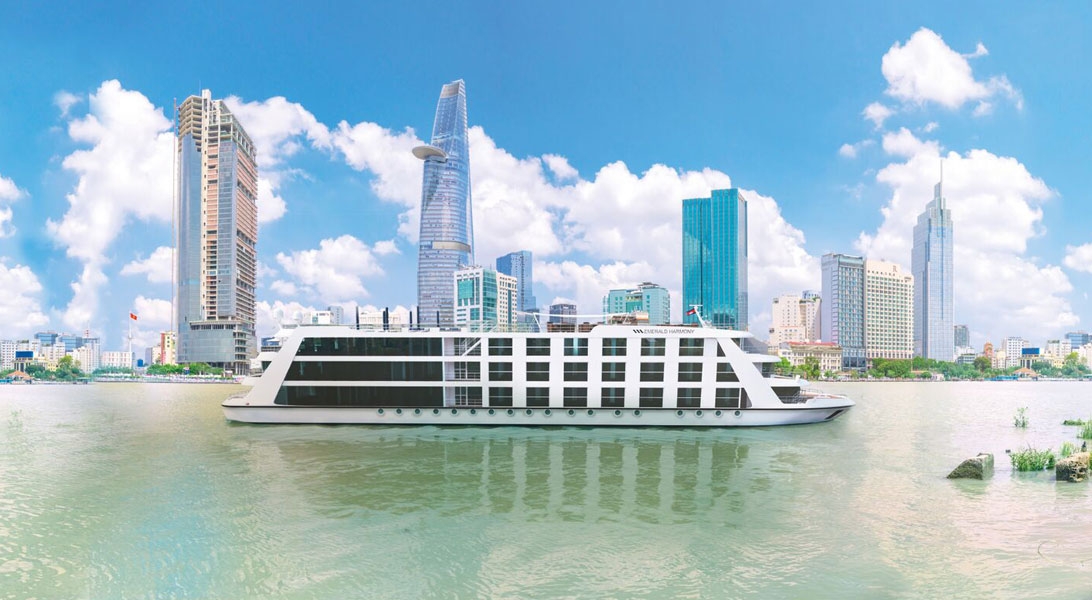





The images shown are for illustration purposes only and may not be an exact representation of what you find on the ship.
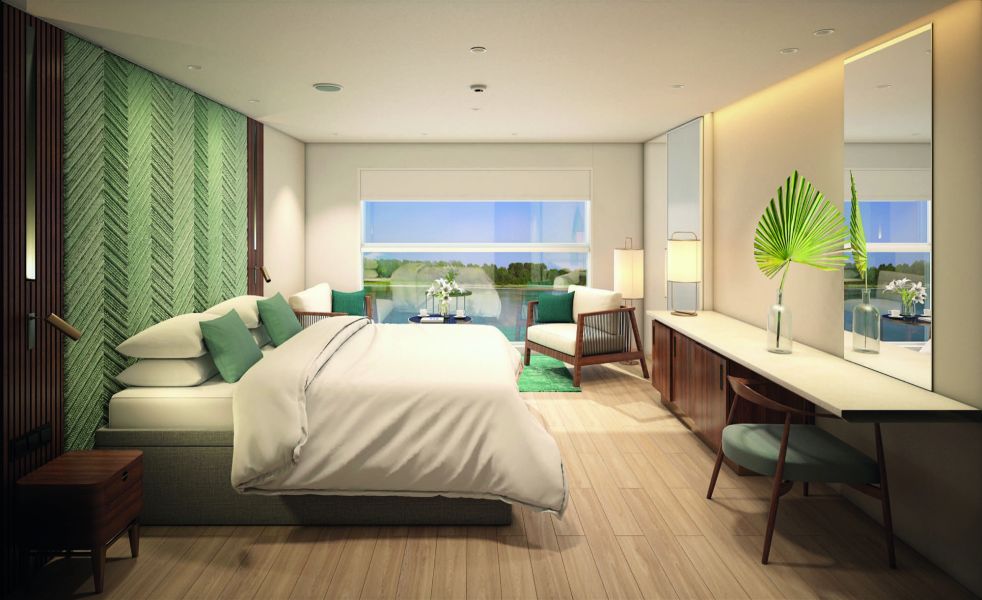
A private balcony with drop-down window is perfect for enjoying the ever-changing views. Reaching 273ft² (25.4m²), relax and unwind in your opulent en-suite bathroom, complete with toiletries, and sleep soundly in your queen-size or twin hotel-style bed.
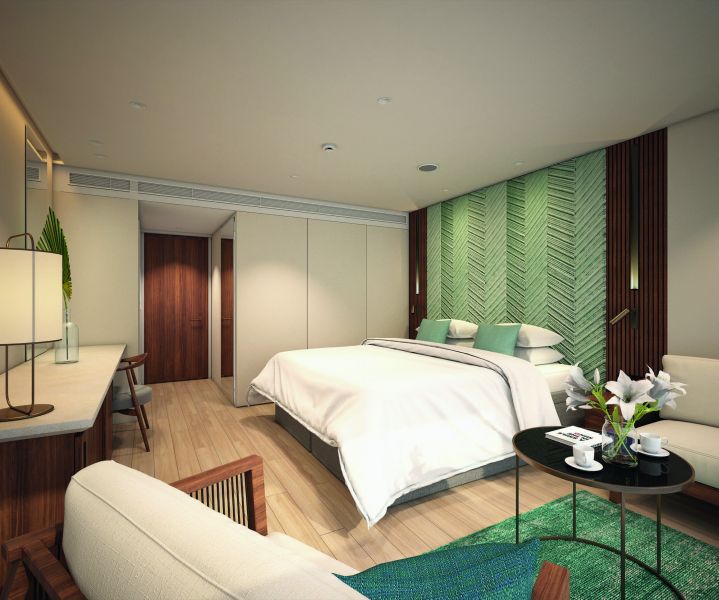
Providing excellent value for money, they are bigger than the average standard staterooms. Enjoy your time on-board in your home-away-from-home, with everything you could possibly need. Emerald Staterooms have porthole river views perfect for seeing the picturesque landscape pass by.
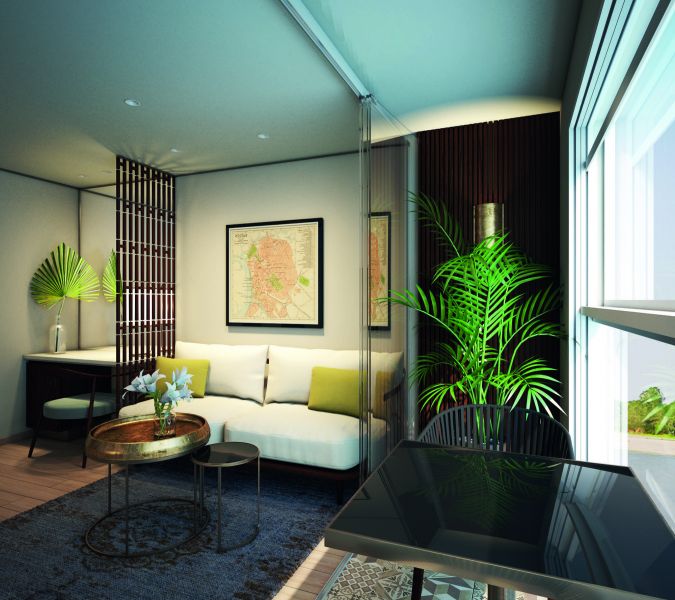
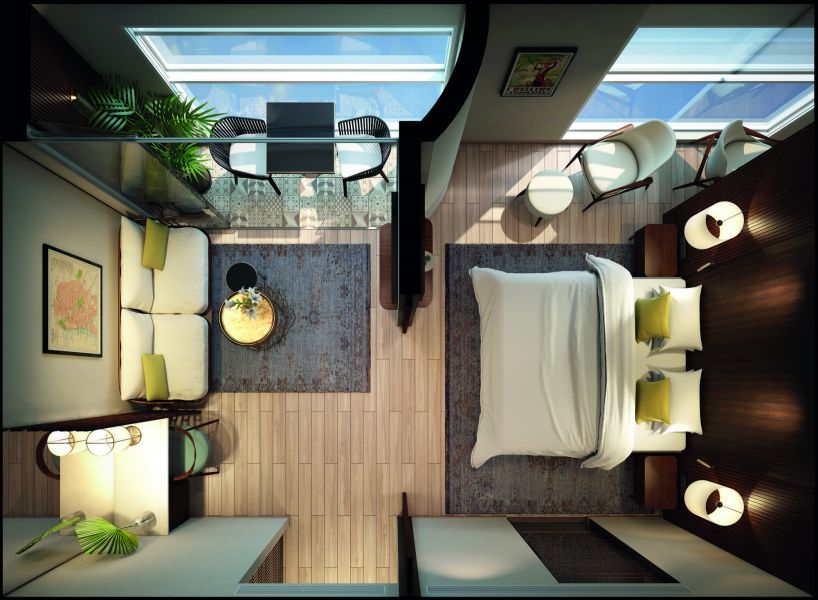
Beautifully appointed with a private balcony, these luxurious suites reach 398ft² (37m²) and host a separate bedroom and lounge. Guests staying in these suites can enjoy the opulent surrounds of the en-suite bathroom, as well as breakfast, canapés and after-dinner treats.
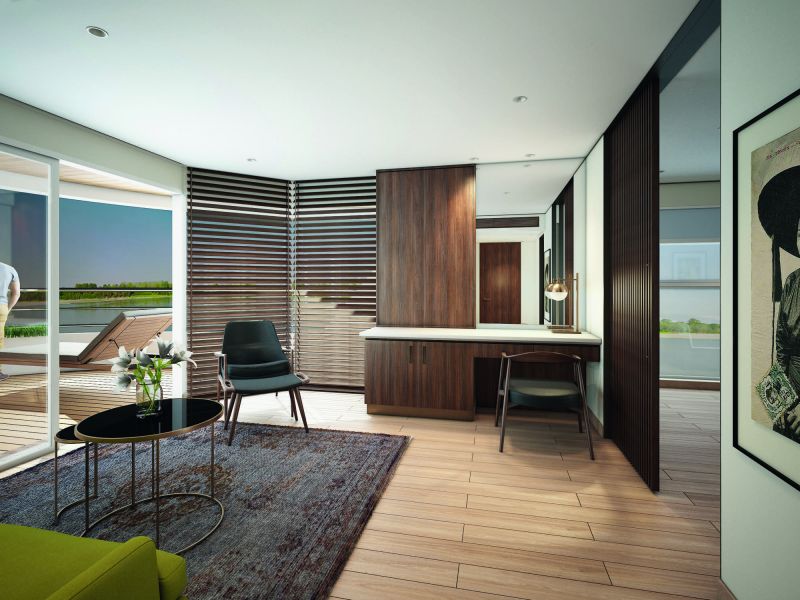
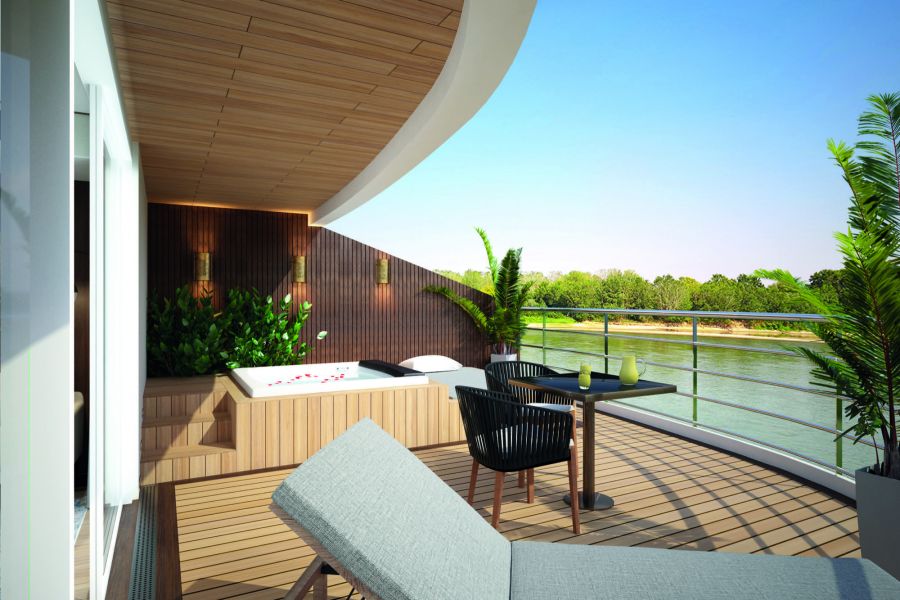
Reaching a colossal 452ft² (42m²), there are just two of these spectacular suites on-board Emerald Harmony, boasting a separate bedroom and lounge area. In addition you’ll enjoy a private 323ft² (30m²) terrace with Jacuzzi. You’ll also be entitled to four laundered items per day, pre-dinner canapés in your suite and an invite to dine at the Captain’s Table.
The images shown are for illustration purposes only and may not be an exact representation of what you find on the ship.
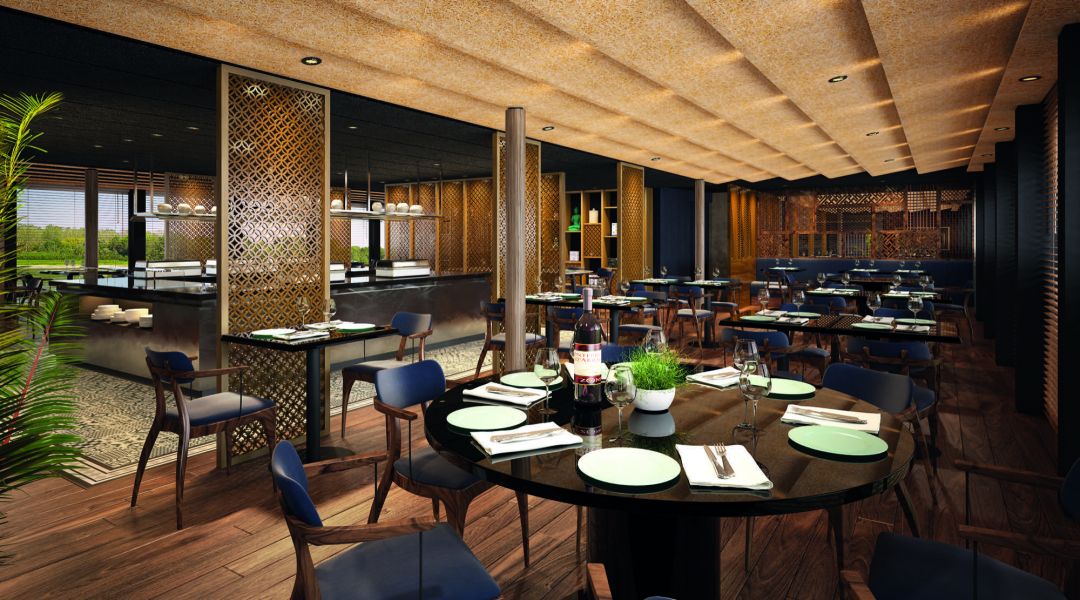
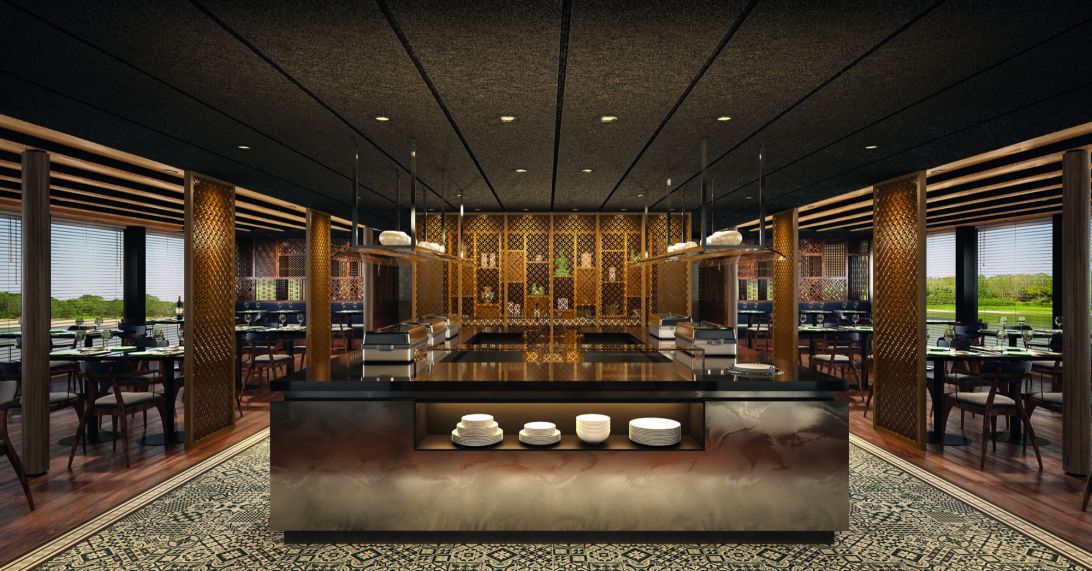
With open seating and elegant design, Reflections Restaurant sets the benchmark in on board dining across our luxury yacht and fleet of boutique Star-Ships. Here, savour delightful chef-prepared meals for breakfast, lunch and dinner, with dishes inspired by local flavours and a few favourites you may recognise from home.
The images shown are for illustration purposes only and may not be an exact representation of what you find on the ship.
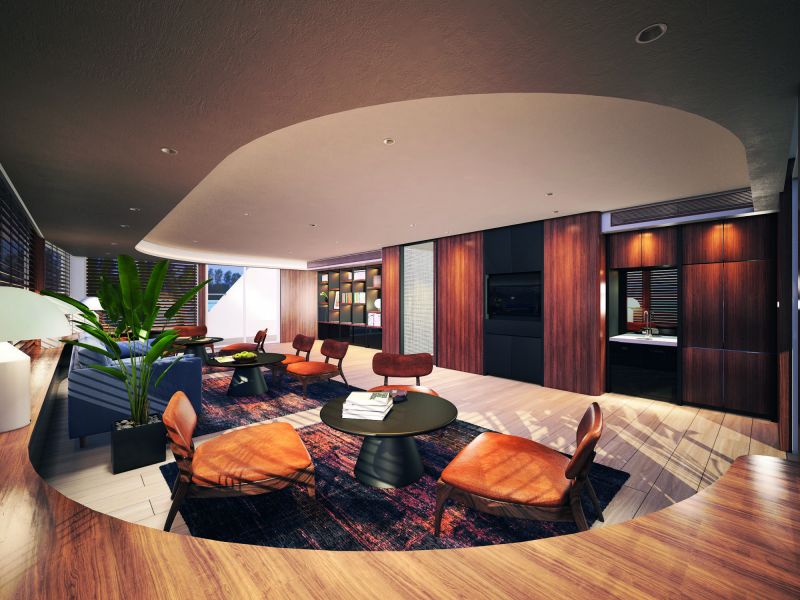
On our Emerald Harmony Star-Ship, we have introduced the Lotus Lounge, where dark wooden tones and muted colours relax you as you sail towards your next destination. Located at the front of the Vista Deck, nibbles and snacks will be available here throughout the day, as well as teas and coffees. Watch the endless horizons unfold as you sip your favourite drink and nibble something delicious.
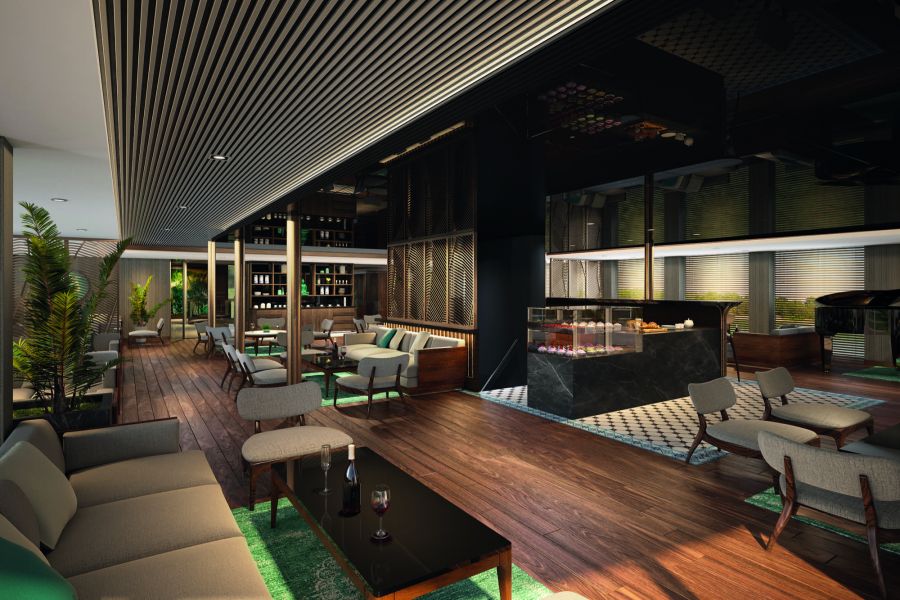
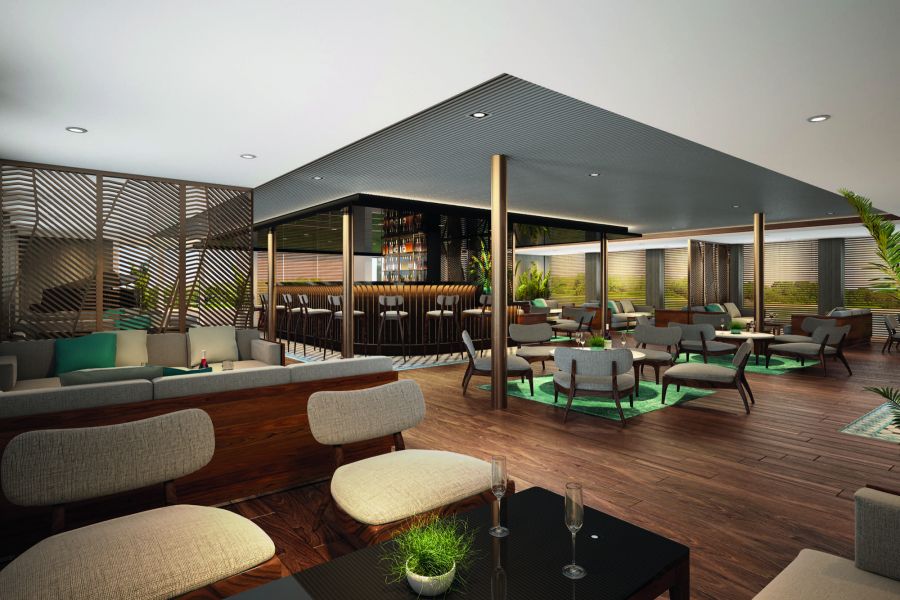
Enjoy a regional beer, glass of wine, cocktail or mocktail in the Asian-inspired surrounds of the Horizon Bar & Lounge. Dark wooden interior and indigenous plants create an authentic environment. And, of course, delicious teas and coffees are always available.
Our bar tenders are experts when it comes to mixing up delicious cocktails, and we’ve sourced the best local and international wines and beers, all complimentary with lunch and dinner. Also available are a delicious selection of mocktails, created using local flavours, like lemongrass and tamarind.
The images shown are for illustration purposes only and may not be an exact representation of what you find on the ship.
The images shown are for illustration purposes only and may not be an exact representation of what you find on the ship.
| Return flights including luggage allowance | |||
| Overseas Transfers | |||
| 20 nights cruising on the Mekong | |||
| Return airport transfers | |||
| Wine, beer & soft drinks with lunch & dinner | |||
| Gratuities Included | |||
| One complimentary shore excursion in every port | |||
| Bikes for passenger use | |||
| Free Wi-Fi included | |||
| Port Taxes and Fees | |||
 | ABTA and ATOL Protection* | ||
Date 12th Feb 2025 |
Nts 20 |
Prices from £6,978pp |
Date 12th Feb 2025 |
Nts 20 |
Prices from £6,978pp |
| Oceanview | Balcony | Suite | |
| (All prices are £GBP per person) | |||
| Wed 26th Feb 202526 Feb 25 | Please call for availability | ||
| Wed 12th Mar 202512 Mar 25 | from 6,888 | ||
| Wed 9th Apr 202509 Apr 25 | Please call for availability | ||
| Wed 7th May 202507 May 25 | Please call for availability | ||
| Wed 15th Oct 202515 Oct 25 | from 5,989 | ||
| Wed 29th Oct 202529 Oct 25 | from 6,201 | ||
| Wed 12th Nov 202512 Nov 25 | from 6,201 | ||
| Wed 10th Dec 202510 Dec 25 | from 5,904 | ||
| Wed 7th Jan 202607 Jan 26 | from 6,074 | ||
| Wed 21st Jan 202621 Jan 26 | from 6,201 | ||
| Wed 4th Feb 202604 Feb 26 | from 6,201 | ||
| Wed 18th Feb 202618 Feb 26 | from 6,201 | ||
| Wed 4th Mar 202604 Mar 26 | from 6,201 | ||
| Wed 1st Apr 202601 Apr 26 | from 5,861 | ||
| Wed 29th Apr 202629 Apr 26 | from 5,436 | ||
Fusion Cruises when selling travel arrangements is a trading name of The Midcounties Co-operative Ltd. Fusion Cruises is an Accredited Body Member of Midcounties Co-operative Travel Consortium. (ABTA:P6652, ATOL:6053).
Book with Confidence. We are a Member of ABTA which means you have the benefit of ABTA’s assistance and Code of Conduct.
Some of the flights and flight-inclusive holidays on this website are financially protected by the ATOL scheme but ATOL protection does not apply to all holiday and travel services offered on this website. This website will provide you with information on the protection that applies in the case of each holiday and travel service offered before you make your booking. If you do not receive an ATOL Certificate then the booking will not be ATOL protected. If you do receive an ATOL Certificate but all parts of your trip are not listed on it, those parts will not be ATOL protected. Please see our booking conditions for information, or for more information about financial protection and the ATOL Certificate go to: www.caa.co.uk
